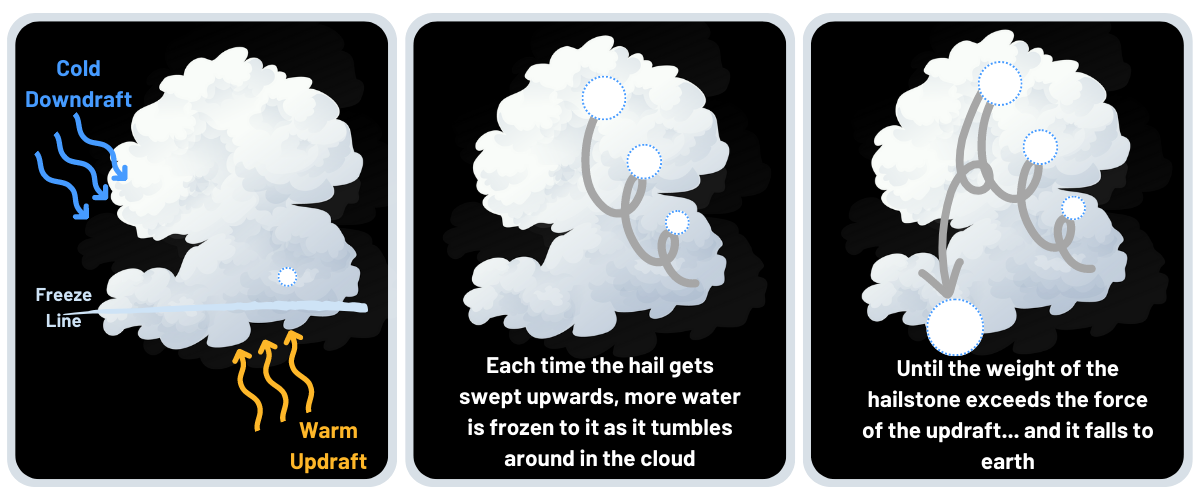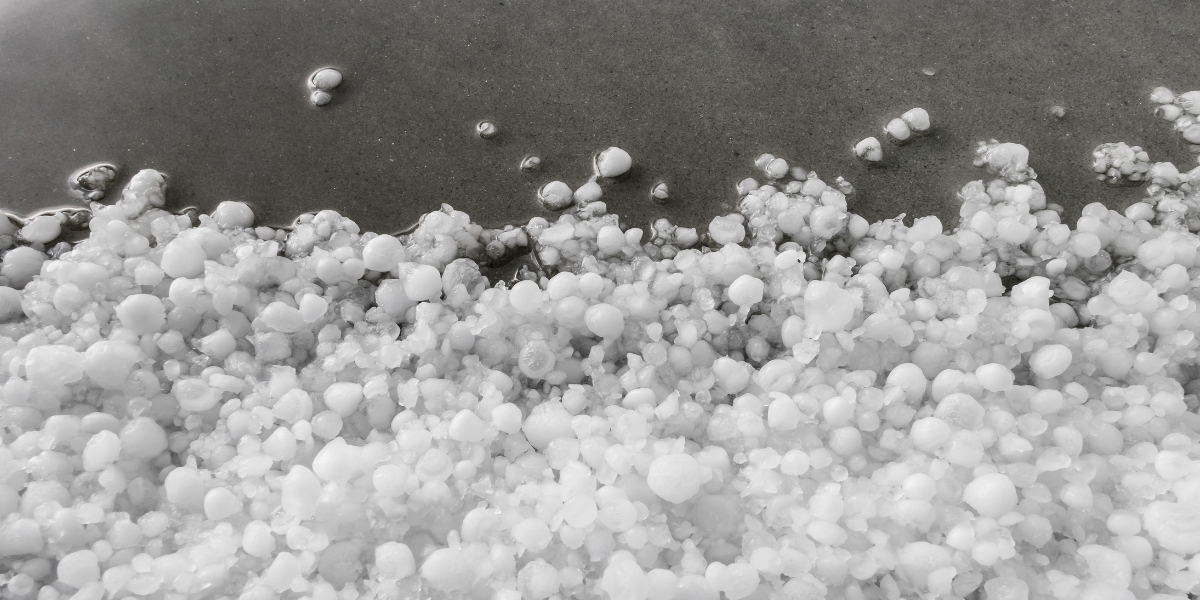Every area across the globe has its own share of storms that bring dangerous weather hazards. One of the most destructive weather-related phenomena is hail. If you live in an area with heavy thunderstorms, you have probably experienced a hailstorm at some point. It's a pretty common occurrence in areas that experience severe weather year-round, like the Midwest and the Great Plains regions of the United States.
Just like snow or rain, hail is also a form of precipitation - however, hail is solid ice that forms inside thunderstorm updrafts. In severe cases, hail can damage property and homes, leading to millions of hail-related insurance claims every year. It's helpful to understand how this dangerous weather hazard comes about, so you know what to do when hail begins to fall. Keep reading to learn more about how hail forms.
What conditions does hail form?
It is a common misconception that hail forms on the ground, but it actually begins to form up in the air inside thunderstorm clouds. A hailstone begins life as a small drop of water in a thundercloud. A thunderstorm is a cloud that makes lightning, right? Well, when you see lightning shooting up into the clouds, believe it or not, there is actually water inside that cloud.
More than 98 percent of hailstones observed have been from cumulonimbus clouds. They are dense, towering vertical clouds that typically form from water vapor condensing in the lower troposphere that builds upward carried by powerful buoyant air currents - also known as thunderclouds.
Hail is formed by updrafts inside these large cumulonimbus clouds, which carry droplets upwards to 13km - 20km above sea level. The updrafts are present at the base of these clouds and rising quickly, almost horizontally through the cloud. In the right conditions, this updraft can develop into a "supercell", which drastically increases its potential for creating large hail. These supercells form when the environmental winds change direction and speed - usually due to the formation of mountain ranges nearby or different air masses combining. The temperature difference between these two different air masses is what gives the storm its ability to create hail.

As the cloud continues to grow, water droplets freeze. And, as updrafts from the storm push up, these frozen water droplets are swept up with it. Additional layers of ice form each time the frozen water droplet is swept upwards. The frozen droplet forms into a hailstone, which continues to grow larger and heavier as more water freezes onto it each time it is swept upwards. These pellets then continue to rise through the cloud. A hailstone will pick up speed as it moves higher within the thunderstorm, and it gains enough momentum to be carried upward towards the top of a severe thunderstorm (where the air is coldest). Eventually, the weight exceeds the force of the updrafts and the hailstone falls to earth.
As they get closer to the ground, warmer air surrounding the freezing cold ice particles evaporates some of the water surrounding them. This causes a steep drop in temperature which results in the freezing cold ice particles colliding with each other, resulting in a hailstone.
A lot of times, these hailstones are rather small, measuring roughly an inch or two – but they can definitely be much larger. The longer hail is up in the air, the bigger it grows and the more damage it can potentially cause. Some hail stones can reach the size of a softball before dropping to Earth.
Track Hail Storms in Your Area with HailTrace
Did you know you can track where hail has hit in your area? It’s true! OneClick Code, the first-ever company to automate building code data for the roofing industry, partnered with HailTrace, the leading weather forensics company, to report hail and wind data for every roof. The integration pairs two significant factors that impact every roofing estimate: weather and building codes. For the first time, roofing contractors and insurance adjusters finally have the tools to access actionable data and write defensible estimates to win more jobs.
Any project you start in OneClick Code will include a 3-year hail and wind storm history with the size of hail and speed of wind right in the snapshot. Test out the weather reports for yourself.

About HailTrace
HailTrace is a technology company that excels in weather forensics. They have a team of 5 meteorologists that analyze and build a database of hail maps, wind maps, and tornado maps across all of the United States, Canada, and Australia in real-time! Actionable data is then generated to nurture existing customers, build new leads, and track potential prospects. HailTrace's mission is to partner with restoration companies by providing industry-leading ideas, marketing strategies, and weather-related data. Assisting them in accomplishing maximum growth while delivering a client-first mentality and a world-class experience! To learn more, visit https://hailtrace.com/.
About OneClick Data Inc.
OneClick Data Inc. is a trusted data partner dedicated to streamlining the code-sourcing process for all parties in the roofing industry while increasing efficiency and transparency for all stakeholders in construction and restoration. They have the only platform, OneClick Code, to have blazed the trail for data automation of jurisdictional authority for building codes, permit fees, taxes, and manufacturer specifications required for any address nationwide. OneClick Code has been serving customers in the contracting, insurance, and claim adjusting fields by providing instant access to trusted roofing codes with the click of a button. Offering unique reports that can be easily shared between all stakeholders in the roofing claims industry, OneClick Code adds value to all parties and empowers customers to save time and money on every claim. Welcome to restoration intelligence, automated. To learn more, visit www.oneclickcode.com.



